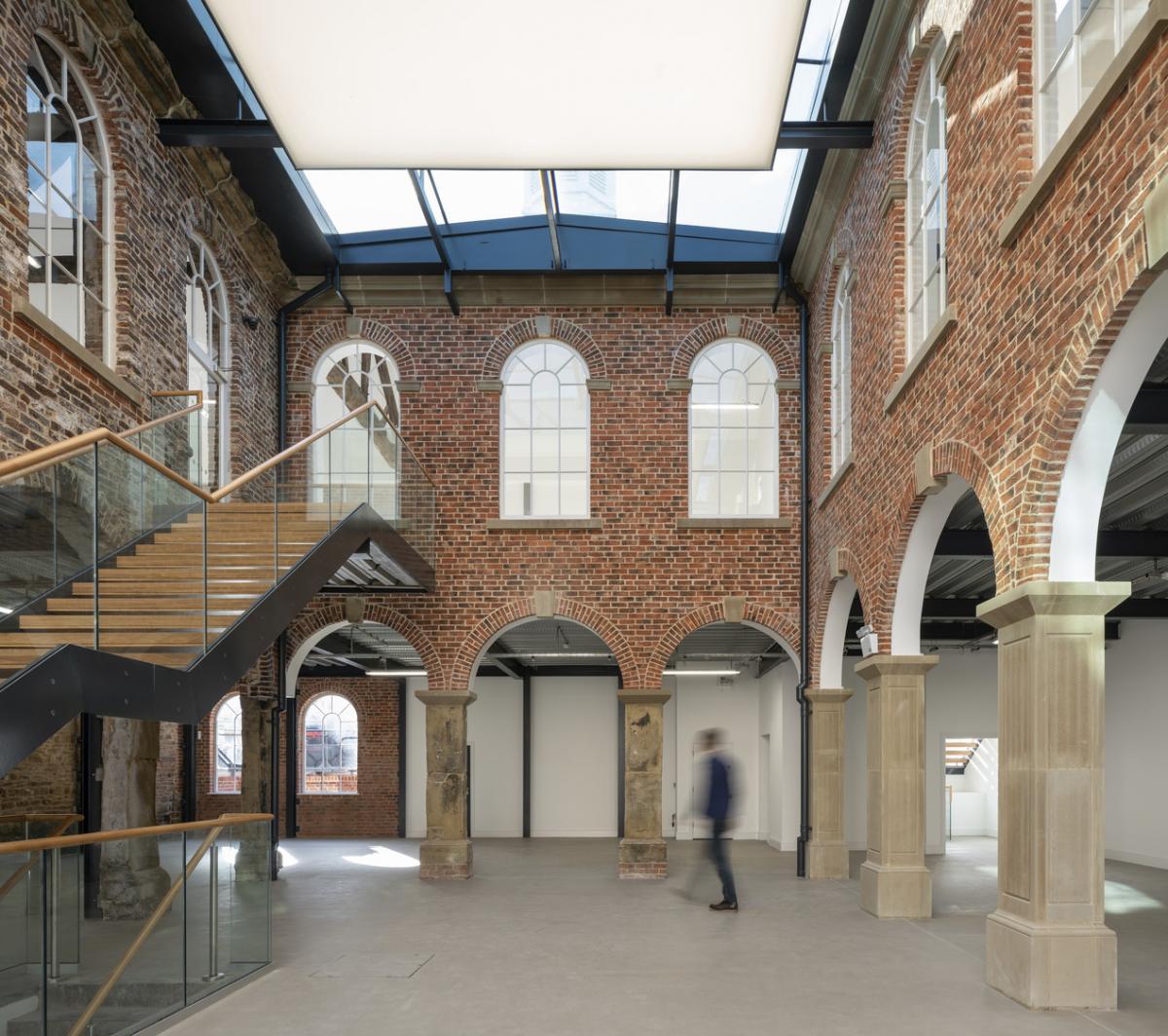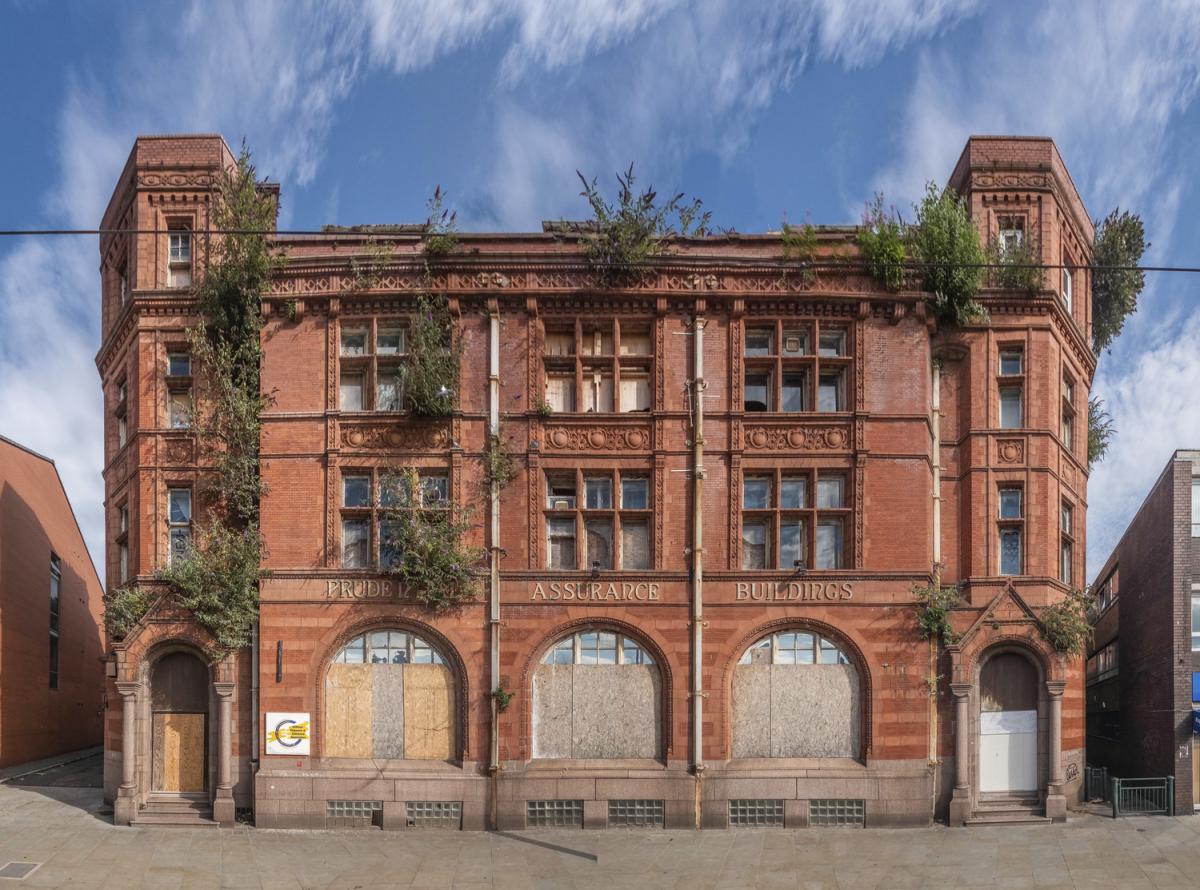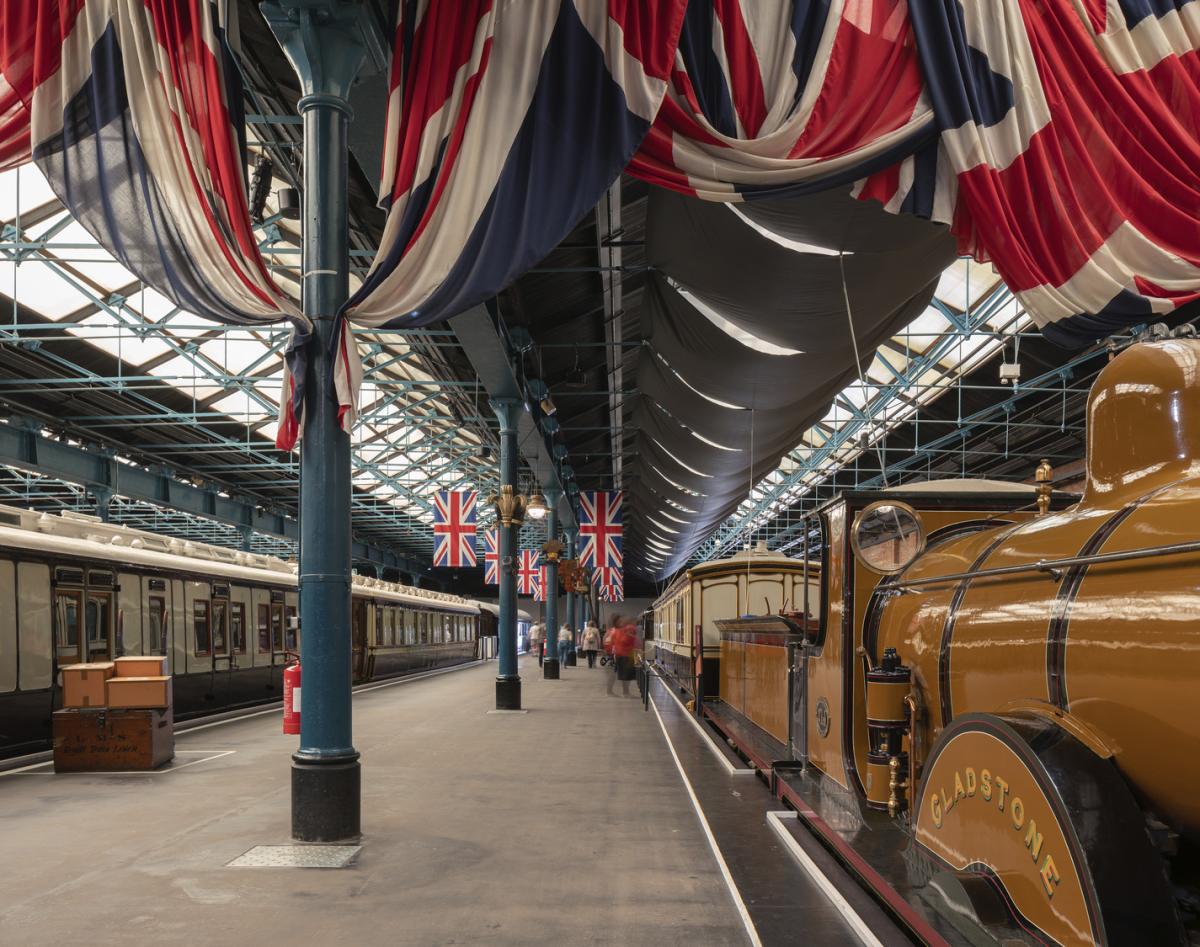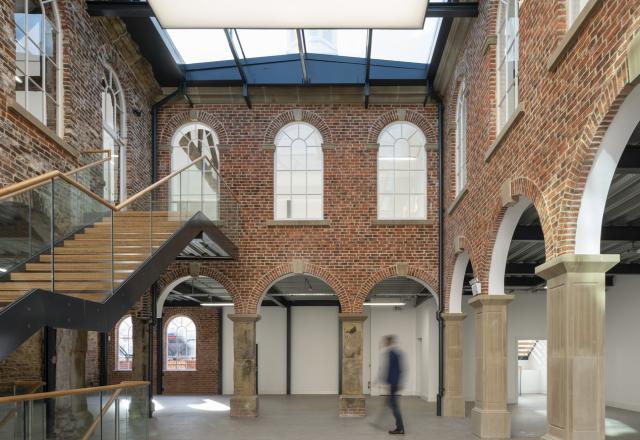It is broadly agreed within the UK population that climate change is happening. It’s no longer happening elsewhere, it is evident in our everyday and it is impacting the way we live our lives. Individuals and businesses are increasingly recognising that we need to change the normal way of doing things, and to change them now. As architects, and specialists in heritage and conservation, we have a real opportunity to influence the ways in which our built environment can perform better, to generate and use less carbon.
We can do this through our designs, by communicating our expertise and normalising the ways we talk about sustainability, and by influencing policy that makes it easier for us all to take positive steps to a more equitable future.
The built environment is a major contributor to climate change. The UK Green Building Council’s Whole Life Carbon Roadmap illustrates the UK built environment is currently responsible for 25% of the total UK emissions which consists of all manmade elements of buildings and infrastructure. As carbon emissions continue to rise, energy-efficient building design is an increasingly important issue, and as such the built environment is increasingly adopting accreditations such as NABERS, BREEAM, and Passivhaus for new builds and existing buildings.
Newly constructed buildings are more energy efficient, but 80% of the buildings in 2050 have already been built, so a major priority is decarbonising the UK’s existing stock. Given this, there is now an urgent need to raise the profile of sustainable solutions through retrofit. When we look closer at the 80%, which of these existing buildings would we class as historic buildings? Are there yet more considerations that we must take into account? How is sustainability factored into the existing decisions for managing change to listed buildings for example?

What is in the architect's toolkit to reduce the carbon footprint of our cherished historic buildings and places and how ready are we all to embrace innovations to ensure that they are sustainable?
There are many moves that we can make to improve the performance of historic building fabric that are simple and effective. For example, replacing single glazing with sympathetic double glazing vastly reduces heat loss from a building, and simply maintaining fabric is another small action that brings big results. Bigger moves might include incorporating passive design measures such as to decarbonise a building such as introducing insulation and installing energy-efficient ventilation systems.
Change to listed buildings requires consent. Conservation to listed buildings practise seeks to manage change appropriately by identifying proposals against a consideration that looks to balance ‘harm’ against a public benefit or the ‘positives’ in policy terms. In short, ‘harm’ to historic buildings is an accepted outcome if that change is demonstrably beneficial for the building’s long-term viable use.
Currently, there is no consistent approach to sustainability and decarbonisation as a public benefit with, for example, one council readily accepting proposals for appropriate double glazing use and others not. A recent example gaining much press coverage has been news that the York Minster is to install 199 solar panels to the cathedral’s South Quire Aisle, which are expected to generate 75,000 kilowatt-hours of power annually. This has been met with opposition from the public. Again, the balance of perceived harm to the listed building and the public benefit of decarbonising the cathedral estate improving its sustainability and therefore protection is open to nuance and interpretation.
In the mid-1990’s with the introduction of the Disability Discrimination Act 1995, which later became the Equality Act – everyone was given the right to dignified access to historic buildings to which the Act applied. Reasonable adjustments were, and continue to be, required for many publicly accessed historic buildings. The aim of removing disadvantages has been adopted into the design as public benefit and as such conversations around the importance of changing buildings for the better have become normalised and standard practise.
We are currently in a position where there is no such clear guidance stating that the adoption of change to reduce a listed building’s carbon footprint is a public benefit. Our ambition is that when approaching historic buildings for future work, sustainable interventions are fully embedded into the design conversation, accepted as standard practise, and supported by policy. The lack of a consistent government strategy on a local and national level is challenging.
Conservation of our cultural heritage is important as these buildings are a tangible representation of our historic values of a society. We know retrofitting them makes them more viable and will help to preserve these values and their historic significance for future generations.
Buttress has extensive experience in retrofitting significant historic buildings. Recently we received planning permission for the transformation of the Grade II listed Prudential Building in Oldham into a business incubation hub. The Prudential, built in 1889 to designs by one of the Victorian period’s greatest architects, Alfred Waterhouse, has been laid vacant for the past 12 years and is in a state of disrepair. Buttress’ proposals, working for Oldham Council, seek to retrofit the building, preserving as much of the original fabric and detail as possible, whilst adapting it to a new sustainable use.

A little further away at the National Railway Museum in York, work is underway on the first phase of a multi-million-pound restoration and re-roofing project at the Grade II listed Station Hall. The Station Hall roof has suffered from significant deterioration over time, with the poor condition of the previous fixings and abutments causing water ingress throughout. The new roof will provide a thermally efficient and weather-tight solution to protect the collection and preserve the Grade II listed structure, whilst adhering to the building’s Victorian heritage. In addition to the re-roofing works, the wooden doors to the rear and side of the hall will be removed and replaced by thermally efficient glazing, creating views to the South Yard.

These are just two of Buttress' current projects that are being retrofitted, improving their performance in a manner that is sensitive to their significance. Retrofitting them helps to preserve their historical values and memories for the next generation of people to use and enjoy them.
Our concerns are towards the many buildings that have been neglected. This could be partly due to financial reasons but also may be due to the confusion around policy and the various inconsistent approaches. Sometimes a preservationist and inconsistent approach to change in the historic built environment has consigned heritage assets to obsolescence. Our cities, towns and villages are littered with significant historic buildings which have fallen by the wayside as they have been unable to adapt to the needs of contemporary society. Sometimes, the greenest building is the one that already exists.
Above all, for the built environment sector to have a wide-reaching impact, more needs to be done to help heritage and conservation professionals utilise their skills and knowledge to improve the sustainability of our existing buildings. This includes having policies - giving realistic guidance on building conservation. Local and national policy decision-making needs to be holistic and forward-thinking, taking into consideration the needs of buildings and the environment. Consistent, forward-thinking policy and decision-making will support the acceptance of heritage-informed retrofit, securing long-term benefits for historic buildings and the environment. As climate change is happening at speed now – there is an urgency to include and embed this kind of understanding into the process right now. Climate change will continue to grow, and our response to it has to change today. The good news is that we can preserve our historic buildings in line with wider performance goals for many years to come.
To find out more about our work in the heritage sector click here.

